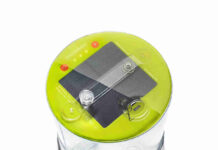 MIT labs will face us with a new discovery and thanks to it the entire surface area of a building’s windows could be used to generate electricity.
MIT labs will face us with a new discovery and thanks to it the entire surface area of a building’s windows could be used to generate electricity.
The key technology is the photovoltaic cells based on organic models which harness the infrared light energy while visible light is passing through. Usual windows glass is coated with the photovoltaic cells and could provide power instead of light. Talking about the installation costs these are lowered by taking advantage of existing window structures.
The installation cost for classical thin film solar power system varies from half to two thirds and up to half for glasses and the structural parts of solar power panels themselves. Now the transparent photovoltaic cells system is developed by Richard Lunt, a post doctoral researcher at MIT, which will eliminate many of those associated costs, he said.
Previous attempts to create transparent solar power cells have either had extremely low efficiency, or have blocked too much light to be practical for use in windows. But the MIT researchers were able to find a specific chemical formulation for their photovoltaic cells that, when combined with partially infrared-reflective coatings, gives both high visible-light transparency and much better efficiency than earlier versions — comparable to that of non-transparent organic photovoltaic cells.



